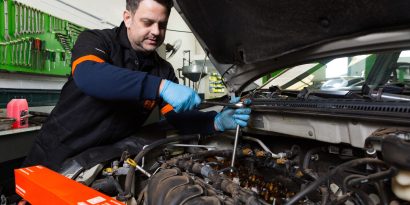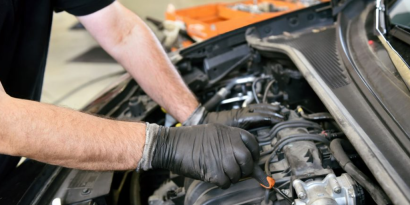When was the last time you checked the wear of your car tires? This simple question, which still gets a lot of people by surprise, hides a hard truth: most drivers fully neglect the maintenance of car tires and only starts worrying about them when it’s too late.
When we talk about safety and performance of a car, issues such as precautions with the engine and its components are usually on the top of the priority list. However, the tires are also an essential part of this structure – and that’s why in today’s article, we’re going to share some important tips to help you avoid problem situations and extend their lifespan!
Identifying the main signs of tire wear
First of all, it should be very clear that the tires play an essential role in stability, traction, and braking capacity of a car. This means that, when ignoring the tire wear precautions, you’re not only forcing the engine and its components to work twice to compensate these factors, but it also increases the risk of accidents.
Also, of course, driving with worn or bald tires is a serious infraction of the Brazilian Traffic Code, which may result in substantial fines and, in some cases, car confiscation. The good news, however, is that most of the problems caused by tire wear may be easily identified by a simple visual inspection. And here we explain some of the common failures:
1 – Irregular wear
The irregular tire wear – those cases where one of them is mangled faster than the others – may show alignment or suspension issues. It’s worth paying attention to it and seeking a specialized garage, since this not only reduces tire lifespan, but also affects the car comfort and driveability.
2 – Appearance of bubbles
The appearance of bubbles or protuberances on tire sides is a sign that something is wrong with the internal part of this component. This may result in a burst tire during driving, which represents a major risk for the driver and for other road users. The recommendation is to replace the tire as soon as possible!
3 – Visible defects on the surface
Cuts or cracks on the tire surface may compromise its integrity and affect its traction capacity in wet roads. It’s a problem that usually manifests in very old tires or in cars that spend a lot of time parked without the appropriate protection – which usually damages all the tires at the same time.
4 – Insufficient tread depth
The tire treads – those rubber lumps – play an essential role in water drainage and ground grip. Tires with very shallow tread can cause aquaplaning and impair braking of cars driven on rainy days. It’s a problem that will invariably occur in tires that have already been used a lot and there’s nothing that can be done to solve the situation: the solution is to change them.
How to extend the lifespan of your tires
Now that you know some of the most common problems caused by the wear of your car tires, it’s worth emphasizing that there is a series of precautions that may be taken in order to delay tire deterioration and extend their lifespan. Check them out:
Check the calibration: Maintaining tire pressure within the manufacturer specifications is essential. Overinflated tires wear more quickly and affect fuel consumption.
Rotate your tires regularly: Periodic tire rotation helps to distribute the wear in a uniform manner, extending their lifespan.
Pay attention to the alignment: Make sure your car alignment and balancing are appropriate. Incredible as it may seem, the lack of this care is still one of the main causes of excessive tire wear.
Avoid car overload: Every car has a maximum recommended weight capacity – you can find this information in the manual. Respecting this limit helps to extend the tire lifespan and also ensures a more efficient braking in cases of emergency.
Drive carefully: Avoid sharp turns, sudden braking, and chocks with holes and obstacles. Driving carefully preserves the integrity of tires, is good for your money, and, of course, enhances road safety.
Keep a maintenance routine: Follow the manufacturer recommendations regarding tire inspections and change. Remember that, after a certain mileage travelled, the tires should be changed, even when they are still appear to be in good condition.
Finally, don’t forget that it’s always important to count on a skilled labor and a reliable garage to perform regular inspections and maintain a detailed schedule of periodic inspections. Thus, you can be sure that your tires will always be in good conditions and ready to face any challenges that the road may present!





